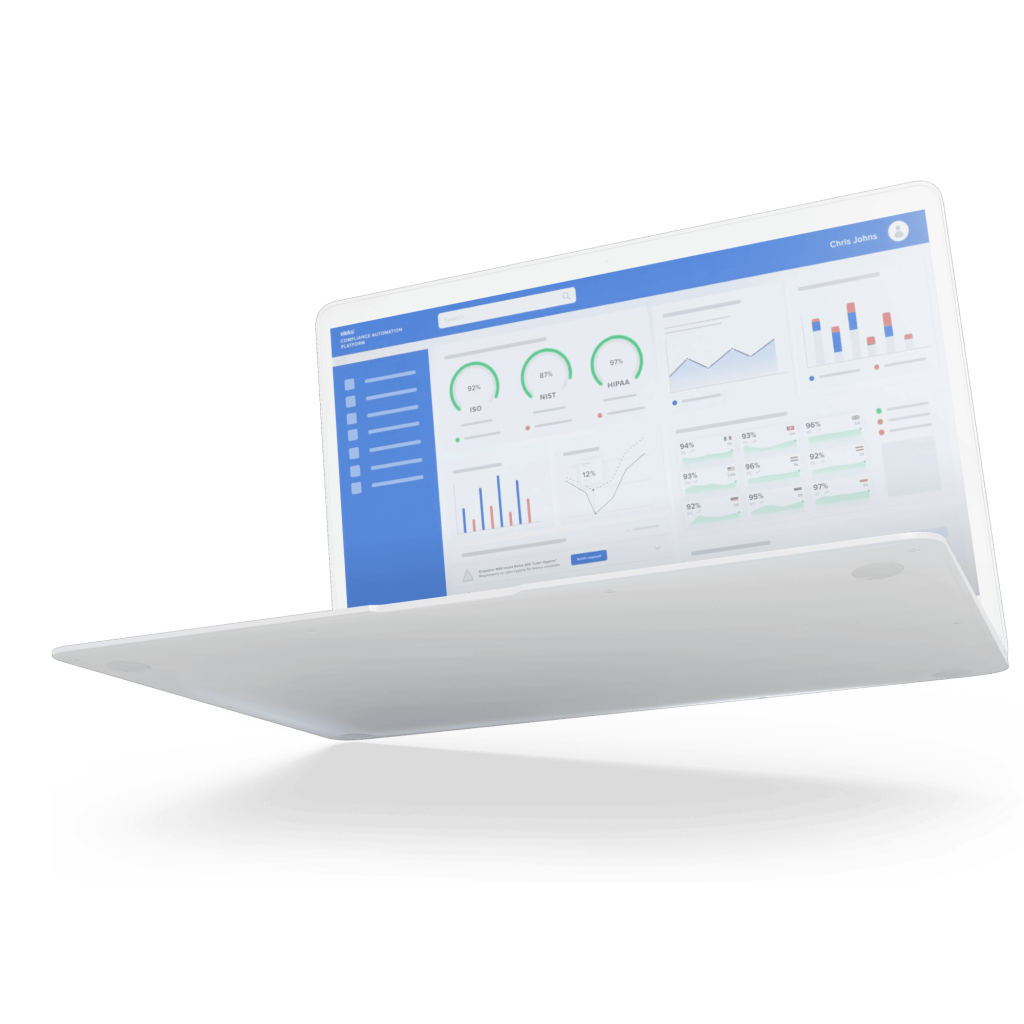
RPA tools: beyond traditional automation
RPA (robotic process automation) platforms are technologies designed to automate repetitive and rule-based tasks typically performed by humans. These platforms utilise software robots, or "bots," to mimic human interactions with digital systems and enterprise apps, thereby increasing efficiency and reducing the potential for human error. Unlike traditional automation methods that require API integration, RPA tools can:
- Interact with legacy systems lacking modern APIs
- Execute cross-application workflows
- Handle structured and semi-structured data
Improved accuracy, enhanced operational efficiency with 24/7 process execution, faster processing times, increased employee satisfaction by eliminating mundane tasks and better customer experience through faster response times are among the many benefits RPA implementation brings to businesses. But how do you choose the right automation platform to maximise the perks?
One of the best options is to partner with technology service providers who offer hands-on expertise in RPA implementation. These providers can assess business processes, recommend suitable platforms, and guide the automation journey based on specific organisational needs and constraints. Experienced service providers can also help determine when RPA is the optimal solution versus other automation approaches. For instance, while RPA tools excel at automating UI-based interactions and cross-system workflows, some processes might be better served by API integrations, workflow automation tools, or custom development.
If you prefer to conduct the research independently, our team has prepared a detailed comparison of the most popular RPA platforms. Let's explore the options.
RPA platform selection: navigating the options
Choosing an RPA platform requires careful evaluation of various solutions available in the market. These enterprise-grade automation tools differ in their capabilities, ease of use, and specialised features. When comparing platforms, organisations must consider:
- Integration capabilities with existing systems
- Scalability potential for growing automation needs
- Learning curve and technical requirements
- Total cost of ownership
The RPA landscape features several established leaders including UiPath, Automation Anywhere, Blue Prism, Microsoft Power Automate, and WorkFusion, each bringing distinct advantages to the table. At the same time, each of them comes with specific considerations that businesses must consider. Here’s a brief overview:
| RPA platform | Pros | Cons |
|---|---|---|
| UiPath | - User-friendly drag-and-drop interface - Comprehensive toolset - Strong community support - High scalability - Robust security and analytics |
- High cost - Complex licensing model - Resource-intensive |
| Automation Anywhere | - Powerful cognitive automation - Extensive bot store - Strong AI/ML integration - High scalability - Enterprise-grade security |
- Steeper learning curve - High cost for advanced features - Issues with customer support responsiveness |
| Blue Prism | - Designed for enterprise-level deployments - Robust security - Strong integration capabilities - High scalability |
- Requires more technical expertise - Less user-friendly for non-technical users - Higher cost |
| Microsoft Power Automate | - Seamless integration with Microsoft products - Low-code/no-code interface - Cost-effective for Microsoft users - Good for small to mid-sized deployments |
- Less effective for non-Microsoft products - May lack advanced features |
| WorkFusion | - Combines RPA with AI/ML - Suitable for complex, unstructured data - Strong in banking, insurance, healthcare - Robust security and compliance |
- Requires significant expertise - Higher cost - Complexity in implementation |
Comparison of RPA platforms by key attributes
The diverse capabilities of RPA platforms are shaped by their fundamental attributes, which determine how effectively they can tackle various automation challenges. Here are the key attributes of RPA tools and what they imply:
User interface automation
- Screen scraping: Ability to extract data from the display layer of applications.
- Simulating mouse and keyboard actions: Emulating user interactions with applications via mouse clicks and keystrokes.
Data handling and integration
- Data extraction: Extracting data from various sources such as PDFs, emails, web pages, and databases.
- Data transformation: Manipulating and transforming data into the required formats.
- Integration capabilities: Integrating with various applications and systems, including legacy systems, ERP, CRM, and web services.
Process automation
- Workflow management: Defining and managing end-to-end workflows for automating business processes.
- Conditional logic: Implementing decision-making capabilities within workflows using if-then-else conditions.
- Exception handling: Managing and handling exceptions and errors that occur during the automation process.
Ease of use
- Drag-and-drop interface: Providing a user-friendly interface that allows users to create automation workflows without extensive coding knowledge.
- Low-code/no-code: Enabling business users to design and implement automation with minimal programming skills.
Scalability and performance
- Scalability: Ability to scale automation efforts from small tasks to complex, enterprise-wide processes.
- Performance optimisation: Ensuring efficient execution of bots and minimizing resource consumption.
Security and compliance
- Data security: Ensuring secure handling of sensitive data with encryption and access controls.
- Audit trails: Maintaining detailed logs of bot activities for compliance and auditing purposes.
- User authentication: Implementing robust user authentication mechanisms to prevent unauthorised access.
Analytics and monitoring
- Real-time monitoring: Providing real-time visibility into the performance and status of bots.
- Analytics and reporting: Offering analytics and reporting tools to measure the effectiveness of automation and identify areas for improvement.
- Dashboards: Visual dashboards for tracking key metrics and KPIs related to automation.
AI and ML
- Cognitive capabilities: Integrating AI and ML to handle unstructured data, such as natural language processing and image recognition.
- Intelligent automation: Enhancing traditional RPA with cognitive automation for more complex tasks.
Collaboration and reusability
- Component reusability: Creating reusable components and modules to streamline development and deployment.
- Collaboration tools: Enabling collaboration among team members with version control and shared libraries.
Deployment options
- On-premises: Deploying RPA tools within the organization’s own IT infrastructure.
- Cloud-based: Leveraging cloud-based RPA solutions for scalability and ease of access.
- Hybrid: Combining on-premises and cloud-based deployment options.
Plugins
- Plugins: Extensions that add additional functionalities and capabilities to the RPA platform.
- Examples: Plugins for specific integrations, additional security layers, cognitive features, enhanced reporting tools, and community-contributed plugins.
Now we can map these attributes with the mentioned RPA platforms for better comparison.
| Attribute | UiPath | Automation Anywhere | Blue Prism | Microsoft Power Automate | WorkFusion |
|---|---|---|---|---|---|
| User interface automation | Strong | Strong | Strong | Strong | Strong |
| Data handling and integration | Strong | Strong | Strong | Strong | Strong |
| Process automation | Strong | Strong | Strong | Strong | Strong |
| Ease of use | Drag-and-drop, user-friendly | Drag-and-drop, user-friendly | Technical expertise required | Low-code/no-code, user-friendly | Technical expertise required |
| Scalability and performance | Highly scalable | Highly scalable | Highly scalable | Scalable for small to mid-sized projects | Highly scalable |
| Security and compliance | Robust security features | Enterprise-grade security | Strong focus on security | Integrated with Microsoft security | Strong security and compliance focus |
| Analytics and monitoring | Real-time monitoring, advanced analytics | Real-time monitoring, advanced analytics | Comprehensive monitoring and reporting | Integrated with Power BI for strong analytics | Real-time monitoring, advanced analytics |
| AI and ML | Integrated AI and ML capabilities | Strong AI and ML integration | Limited | Integrated with Azure AI | Strong AI and ML integration |
| Collaboration and reusability | Strong reusability, collaborative tools | Strong reusability, bot store | Limited collaboration tools | Strong collaboration within MS ecosystem | Strong reusability, collaborative tools |
| Deployment options | On-premises, cloud, hybrid | On-premises, cloud, hybrid | On-premises, cloud, hybrid | Cloud-based, hybrid | On-premises, cloud, hybrid |
| Plugins | Extensive plugin ecosystem, including community-contributed plugins | Good range of plugins for various needs | Extensive plugin ecosystem, including community-contributed plugins | Extensive plugin support, particularly within the Microsoft ecosystem | Limited plugin ecosystem compared to others |
Conclusions
We've explored and compared five of the most popular RPA platforms: UiPath, WorkFusion, Automation Anywhere, Microsoft Power Automate, and Blue Prism. Each platform offers unique strengths and caters to different business needs and environments.
UiPath stands out for its user-friendly interface, extensive toolset, and robust community support, making it ideal for businesses seeking a comprehensive and scalable automation solution.
WorkFusion excels in integrating AI and machine learning capabilities, making it suitable for handling complex, unstructured data and industries like banking and healthcare.
Automation Anywhere provides powerful cognitive automation and an extensive bot store, appealing to enterprises looking for high scalability and advanced features.
Microsoft Power Automate offers seamless integration with Microsoft products and a cost-effective solution for small to mid-sized deployments, but it may fall short for non-Microsoft environments.
Blue Prism is designed for large enterprises with strong security needs, providing robust integration capabilities, although it requires more technical expertise and comes with a higher cost.
By mapping the attributes of RPA platforms, we identified their respective advantages and disadvantages, helping businesses make informed decisions. The ideal RPA platform should align with your specific business processes, technical requirements, and long-term objectives. Investing in a platform that meets your needs can lead to significant efficiency gains, cost savings, and competitive advantages. Whether your priorities include ease of use, AI capabilities, integration, or scalability, it is essential to understand the strengths and limitations of these platforms for successful RPA implementation.

FAQs
RPA tools are software applications enabling users to create and deploy robots to automate repetitive computer tasks. These tools can mimic human actions like clicking, typing, and moving between applications to perform business processes automatically.
RPA is a technology that automates rule-based, repetitive tasks that humans typically perform on computers. For example, in invoice processing, an RPA bot can extract data from invoices, validate it, enter it into accounting software, and send it for approval, completing what would usually take hours manually.
RPA tools are software applications enabling users to create and deploy robots to automate repetitive computer tasks. These tools can mimic human actions like clicking, typing, and moving between applications to perform business processes automatically.
Related Insights








The breadth of knowledge and understanding that ELEKS has within its walls allows us to leverage that expertise to make superior deliverables for our customers. When you work with ELEKS, you are working with the top 1% of the aptitude and engineering excellence of the whole country.

Right from the start, we really liked ELEKS’ commitment and engagement. They came to us with their best people to try to understand our context, our business idea, and developed the first prototype with us. They were very professional and very customer oriented. I think, without ELEKS it probably would not have been possible to have such a successful product in such a short period of time.

ELEKS has been involved in the development of a number of our consumer-facing websites and mobile applications that allow our customers to easily track their shipments, get the information they need as well as stay in touch with us. We’ve appreciated the level of ELEKS’ expertise, responsiveness and attention to details.

